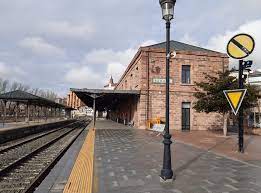Tales of Ordinary Madness, Wikipedia
Tales of Ordinary Madness, movie
Charles Bukowski chez Bernard Pivot
SUMMARY, by Begoña Devis
In a few sentences, Bukowski gives us very important details about this beautiful girl so we can understand her behaviour. What happiness could she feel as a child in her family with an alcoholic father, who probably plunged them into poverty and abandonment? How could she believe she deserved happiness after being abandoned by her mother along with her four sisters following her father’s death? How could she trust others if all she received was envy from her sisters and sexual abuse from men? Even during the years she spent in a convent with her sisters, she didn’t live in peace; she was too beautiful not to be envied and rejected. It was only natural that she hated her beauty and decided to put an end to it once and for all.
PERSONAL OPINION
Childhood abandonment, alcoholism, and the sensitivity hidden behind rudeness and outbursts are recurring themes in Bukowski, who narrates his own miserable life through his stories. This one, coming from its author, is as heartbreaking as it is predictable, though always interesting to read, due to his direct, abrupt, and at times almost pornographic style, which makes it unique and compelling.
Aside from the story itself, I personally —although I understand it couldn’t be any other way— have always found it deeply unfair that an unhappy childhood leads to a difficult life, while a happy one greatly contributes to making adulthood much more enjoyable. It’s like a win-or-nothing game, and only a few manage to turn things around, reconcile with their past, and live a full and happy life despite a difficult start. This wasn’t the case for the most beautiful woman in town.
QUESTIONS
-Would you like to live for a time in a convent? Do you think it would be a benefit for people who lead a stressing life?
-What can be the reason of a self-inflicted wound? Has it anything to do with masochism?
-After making love, the narrator asked the girl her name. What would be the first questions you ask in a first date?
-"Once you accept a drink, you create your own trouble". How true / sexist is this sentence, in your opinion?
VOCABULARY
zap, of age, forged, fair, dramatics, schitzi, elephant ear, bail, fad, hustling, haggle, wearing, pecker, pace, shack, offhand

